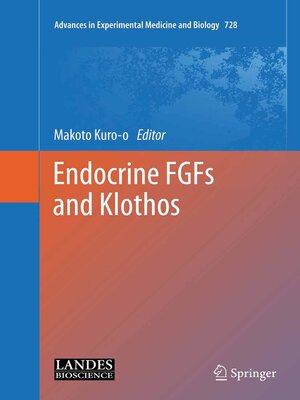
Sign up to save your library
With an OverDrive account, you can save your favorite libraries for at-a-glance information about availability. Find out more about OverDrive accounts.
Find this title in Libby, the library reading app by OverDrive.



Search for a digital library with this title
Title found at these libraries:
| Loading... |
Fibroblast growth factors (FGFs) have been recognized primarily as autocrine/paracrine factors that regulate embryonic development and organogenesis. However, recent studies have revealed that some FGFs function as endocrine factors and regulate various metabolic processes in adulthood. Such FGFs, collectively called endocrine FGFs, are comprised of three members (FGF15/19, FGF21, and FGF23: FGF15 is the mouse ortholog of human FGF19). These endocrine FGFs share a common structural feature that enables the endocrine mode of action at the expense of the affinity to FGF receptors. To restore the affinity to FGF receptors in their target organs, the endocrine FGFs have designated the Klotho family of transmembrane proteins as obligate co-receptors. By expressing Klothos in a tissue-specific manner, this unique co-receptor system also enables the endocrine FGFs to specify their target organs among many tissues that express FGF receptors.






